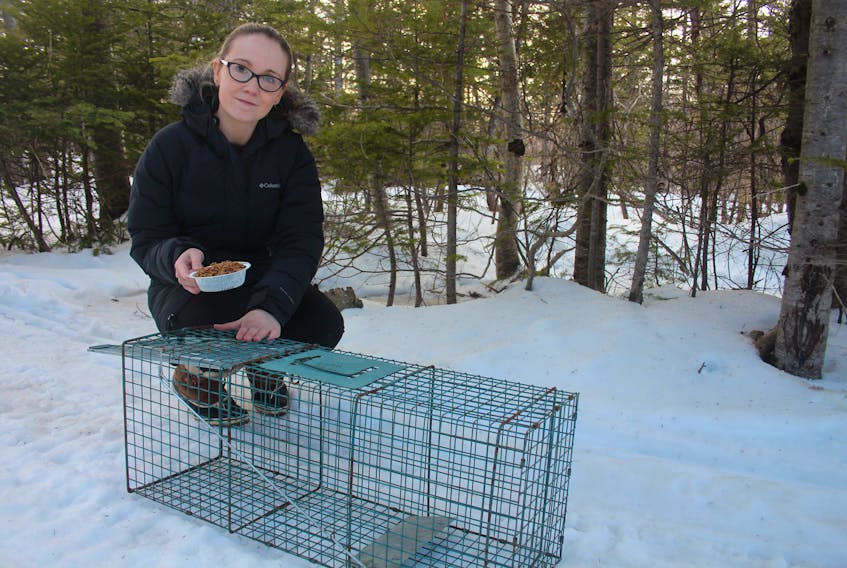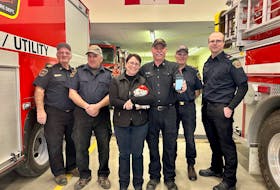GANDER, N.L. — Without placing much focus on it, the presence of feral cats in Gander can pretty much go undetected.
For Emma Manning, it’s as a very noticeable problem.

Her group, Gander Feral Cat/Kitten Rescue, has identified feral cat populations throughout numerous areas of the central Newfoundland town.
The main area of concern is McCurdy Drive, Yeager Street, and the walking trail between Airport Boulevard and Magee Road.
“We set up a camera in an area and in one night we had 10 cats,” she said. “We’re not sure if they are all feral, some may be strays or owned, but these are cats that are consistent to that area.”
Since November, Manning said her group has live-trapped 11 cats. Only two were tame. Four were kittens. Three have been rehabilitated and are ready for adoption. One cat had to be put down because of sickness. The group still has two feral cats, since spayed and veterinarian checked.
The group is currently working on a strategy to prevent the population from growing and providing a stable quality of life for the wild felines.
Manning said they want to place emphasis on live trapping, neutering/spaying and placing them into a reliable caretaker’s area — where they are fed, provided with outdoor shelters and monitored. Any kitten that falls within the rehabilitation period — up to 12 weeks old – would be rehabilitated and made available for adoption.
The previous approach, trapping and euthanizing, is outdated, she said.
“It kind of creates a vacuum effect, where more cats will show up in the area to use up resources and continue reproducing,” she said.
By having a return to caretaker’s approach in place, she said, the cats aren’t able to procreate, providing population control.
“Our goal is to reduce and stabilize the population,” she said.
No roaming policy
Gander has a no roaming animal policy, however.
The group is asking the town to soften its stance on the approach for caretaker cats, which would be detectable through an ear tipping procedure, a slit along on the left ear that Manning said has the pain equivalency of getting one’s ear pierced.
They have also proposed a pilot trap-neuter-return project.
“While it might seem cruel at first, they really are survivors, especially if they have food and outdoor shelters,” Manning said.
“Hopefully the town will see our side, that we aren’t causing the issue, we’re just basically just dealing with what’s already there.”
Gander Mayor Percy Farwell called it a tough issue to approach.
While he acknowledged the request of the group, he said, the town has to consider the best interest and quality of life of free-roaming cats, and the implications on residents, before making a final decision.
Farwell said it will engage other towns that have taken on feral cat initiatives and will speak with the SPCA about this type of format.
“There are a lot of animal lovers in our community, and I’m certainly one of them. We want to do what’s best for the animals,” he said. “Sometimes our desire to do what’s best may not be what’s best for them.”
Farwell said he sees merit to the work groups such as Gander Feral/Kitten Cat Rescue do, adding it appears to have worked for other areas.
“That’s why we need to get our head around what options we are dealing with,” he said.
Because roaming animals is prohibited, there appeared to be some concern about repercussions for those who released feral animals back into a caretaker’s setting.
Farwell said these aren’t rogue residents trying to violate town regulations.
“If a formal program is adopted, that becomes less of an issue,” he said. “But if people out of the goodness of their heart take it upon themselves to informally implement a program, are they at risk… that’s part of the consideration the town has to look into in finding the best route to proceed.”









